Your handy Honda S2000 (2000–09) buyer’s guide
Not all Japanese roadsters are created equal. The difference between the Honda S2000 and Mazda’s Miata and is kind of like the difference between taking a pitch from an MLB starter and one from a prepubescent Little Leaguer: The motions might be familiar, but man, everything’s moving a whole lot faster.
Model Overview
2000
Known internally as the AP1, the debut version of the production Honda S2000 carried on through the 2003 model year. The roadster is built around what Honda called the High X-Bone Monocoque frame, which provided outstanding torsional rigidity and an advantageous 50:50 weight distribution. The driveline is located behind the centerline of the front suspension, making this a front/mid-engine layout. The arrangement kept the S2000’s center of gravity low, helping to centralize the mass of the entire vehicle and allowing for maximum response to driver inputs.
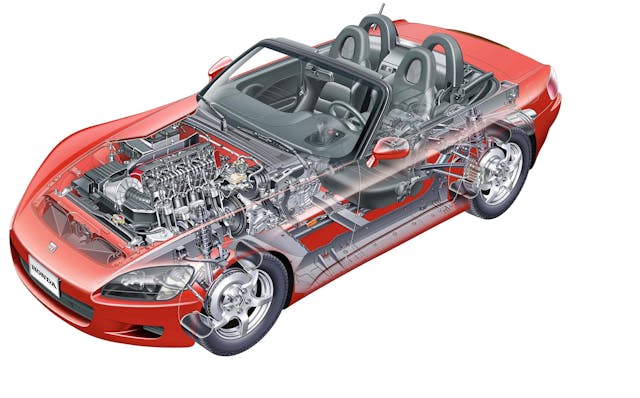
Honda referred to the suspension arraignment as “in-wheel,” a setup shared with the original NSX, which was on sale in the U.S. until 2005. The double wishbones were ductile iron and mounted with rubber bushings that minimized vibration without compromising the suspension’s rigidity. All of this was tied together with a 1.11-inch stabilizer bar up front and a 1.07-inch bar at the rear, keeping the car flat through corners and helping lend the electrically assisted steering a linear feel. Also significant at the time was the size of the brake rotors: At 11.8-inches up front and 11.1-inches in back, the brakes on the S2000 were massive for the time and backed by three-channel ABS as a standard feature.
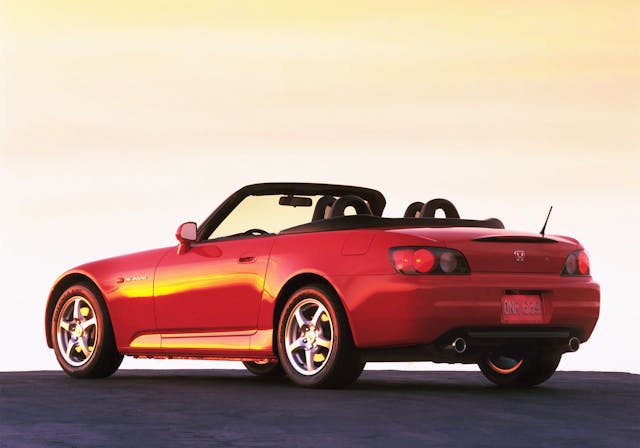
Cars bound for the U.S. had a 240-hp version of Honda’s F20C 2.0-liter, naturally aspirated four-cylinder, which delivered 153 lb ft of torque. Peak horsepower came at 8400 rpm on its way to a fuel cutoff at 9000 rpm. Shifted only via a six-speed manual transmission for its entire run, the S2000 was a pure driver’s car.

Honda built 9148 of these cars in the first year of production, painted in four colors. Silverstone Metallic is by far the most common, with 2871 featuring black interior and 1756 with a dramatic red interior. 2116 examples were finished in New Formula Red, 1350 were Berlina Black with a black interior, another 384 were Berlina Black with red interior, and 671 were Grand Prix White with red interior.
The S2000’s singular trim level was priced at $32,000, compared to the Miata’s $23,545. There were no options other than the accessory hardtop. You chose your color, and that was that.
2001
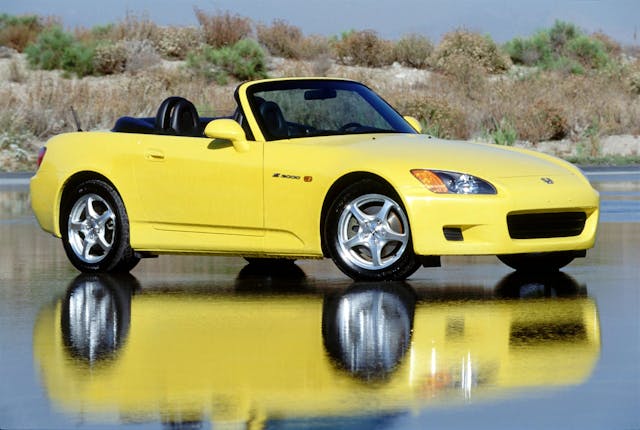
Changes were modest for the S2000’s second year of production, with the addition of a digital clock on the radio, a standard wind deflector, and Spa Yellow Pearl as an available paint color. The latter proved to be wildly popular: 2154 of the 9942 cars produced that for 2001 were finished in Spa Yellow.
2002

2002 marked the first and only year that S2000 production broke 10,000 units. The suspension settings were revised slightly, but more importantly, Honda engineers determined that engines subjected to extended periods of high-rpm operation (say, 7000 rpm-plus for more than 30 minutes at a time) could face oil starvation issues and eventually score the cylinder walls, particularly on cylinder #4. Honda addressed this issue with a mid-year change to new oil jet bolts or “banjo bolts,” (Part Number 15290-PCX-000). Honda recalled cars in Europe but never did so in North America, although earlier AP1 owners can swap out the parts on their own.
The other significant update for the 2002 model year was the elimination of the plastic rear window, in favor of glass. Other minor tweaks included a leather wrapped steering wheel, a vinyl cover for the hard plastic console bin, a better stereo with separate tweeters and revised tail lamps with chrome rings around the internal lenses.
Silverstone gave way to Sebring Silver Metallic paint, available with both black and red interior. Suzuka Blue Metallic was also introduced in 2002 and quickly became the second most popular color choice.
2003
This was the final year for the AP1, and the changes for this model year were minimal. (Even the brochure uses a lot of photos from prior years.) The biggest change was the re-introduction of both Grand Prix White and Silverstone Metallic. Grand Prix White was also noteworthy for now having a tan interior rather than the much hotter red from the first year of production.
2004
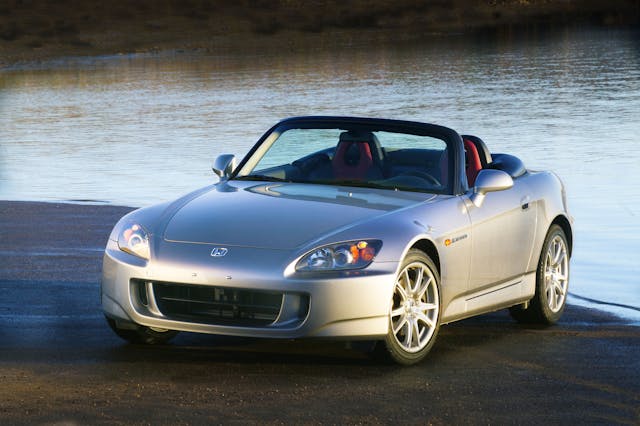
The 2004 model year marked a line of demarcation for Honda S2000 fans: The arrival of the AP2, or second-generation S2000. The revisions were extensive and they noticeably changed the S2000’s character, but whether it’s “better” or “worse” depends entirely on your driving style.
The most obvious change was to the engine: The F20C 2.0-liter engine bowed out, and in its place Honda dropped in the F22C1, a 2.2-liter four-cylinder with a longer stroke. The new engine sported a 6 percent increase in torque, but because of the longer stroke, the sky-high fuel cutoff dropped from 9000 to 8200. Pairing up with the new engine was a revised gearbox with new ratios for all six gears: The first five became shorter, and the sixth was taller for better highway cruising. Brass synchros were also swapped for carbon fiber.

The last major update as part of the AP2 introduction was to the suspension. Again, these changes either “improved” or “did not improve” the S2000’s handling, depending on your preference. The AP1 was set up to be “loose,” meaning that the car would tend to oversteer easier and was designed to power out of corners that way. That’s what many loved about the AP1, but it also resulted in plenty of S2000 drivers hurtling away from the apex of their favorite offramp—backwards. To make the car’s handling more neutral, the AP2 included:
- 17×7 (front) and 17×8.5 (rear) wheels, replacing 16×6.5 (front) and 16×7.5s (rear)
- New Bridgestone RE-050 P215/45R17 (front) and P245/40R17 (rear) tires, replacing P205/55R16 (front) and P225/50R16 (rear) tires
- Front spring rate increased 6.7%, rear spring rate decreased 10%
- New shock settings tuned for new spring rates
- 1.8mm thinner rear stabilizer bar
- New brake pads for better brake feel, and resistance to brake fade
- Steering gear ratio increased to 14.9 from 13.8 to match new tire size
Many cosmetic revisions came along with the performance changes, including new front and rear bumpers, revised headlights, LED tail lamps, and oval-tipped exhaust outlets. Rio Yellow Pearl was a new color for 2004, while both Silverstone Metallic and Sebring Silver Metallic were available with a new red and black interior.
2005
The S2000 was essentially unchanged this year, but some enthusiasts insist that it’s nonetheless noteworthy because it’s the last year before electronics (to a greater degree) started to control the way the S2000 drove.
2006
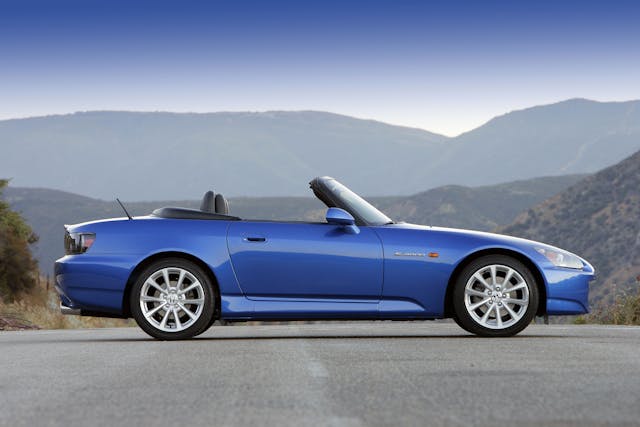
On the surface, other than the introduction of a new color (Laguna Blue Pearl), the S2000 was unchanged for 2006. Two revisions, however, reined in the S2000’s free spirited demeanor: drive-by-wire throttle and electronic stability control.
Cosmetically, the upholstery pattern changed on the seats, and for the first time, the S2000 got one of the Miata’s most recognizable features: a set of four headrest speakers.
2007
With the exception of a new red and black upholstery color on Grand Prix White S2000s, there’s no change between the 2006 and 2007 model year. Even the sales brochure gives the impression that there’s not much going on, as it’s limited to just two pages.
2008

For the very first time in the United States, the S2000 was available in more than one trim. Along with the base car, Honda offered the S2000 Club Racer (CR). Launched at the New York Auto Show in 2007, the S2000 CR featured:
- A rear spoiler, said to smooth airflow and reduce lift by 70%
- 99 pound weight reduction compared to a base S2000 (power top, radio and A/C delete)
- A Berlina Black hardtop, no matter what color S2000 you ordered
- Stiffer stabilizer bars and dampers
- A unique body brace increasing lateral rigidity by 18%, and vertical rigidity by 94%
- An increase of 20mm in combined rear tire width for the Bridgestone Potenza RE070s
- Shifter shortened by 12.6mm
- Deep, bolstered yellow and black Alcantara seats
- Faux carbon fiber overlays on the dash
- A revised muffler for a throatier exhaust note
Only 668 of the projected 2000 units were produced in 2008. The Apex Blue Pearl in the Club Racer section of the S2000 brochure was new for 2008, and available on non-Club Racer S2000s. Also new was Chicane Silver Metallic.
2009
While the more obvious victims of the 2008 and 2009 global financial crisis were Pontiac, Hummer, Saturn, and retirement savings, it was also the impetus for Honda to put the S2000 on the chopping block. Changes were non-existent and both base S2000s and the S2000 Club Racer were available, but the sales numbers were grim: Honda sold just 355 S2000s in 2009, and of those, just 31 were Club Racers.
Before You Buy
The biggest thing to consider before buying an S2000 is the previous owner. How was the car driven? Was it regularly maintained, with records to prove it? Has the car ever been involved in a crash? This isn’t specific to S2000 ownership, but sports cars like this one were often driven hard.
Crash damage should be a huge red flag. These cars are rare, but there are enough around that you can find one that isn’t wearing mismatched fender colors, ill-fitting doors, curb rash on the wheels, or damaged sills from being improperly jacked. A lot of this damage can be hiding under the surface of an S2000. Given their mechanical reliability, it’s just as important to have a body shop do a pre-purchase inspection if you’re going to be spending real money.
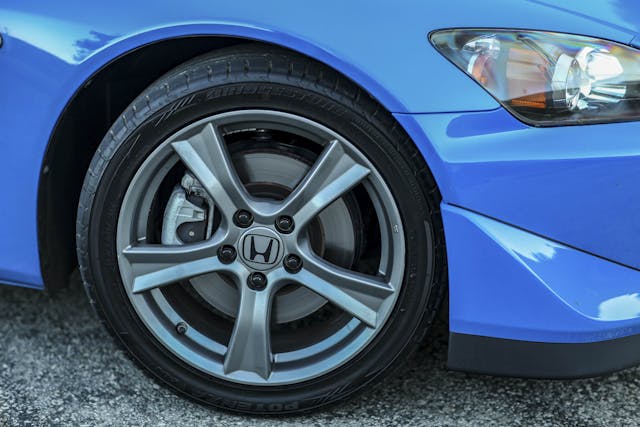
All years of Honda’s S2000 can have issues with the wheel bearings, which can go bad and are expensive to replace. Similarly, these cars can be prone to excessive oil consumption. Early AP1 cars had some complaints about clutch buzz on deceleration, for which Honda issued a technical service bulletin (TSB 00-054, November 27, 2001). There’s the banjo bolt issue we mentioned that was addressed in the 2003 model year. Valve retainers have a tendency to crack after mechanical over-rev on AP1 cars. Spark plugs can also back out, so their torque values need to be checked regularly. Axle nuts can also loosen.
After the transmission was revised for the AP2 generation, the S2000 had a tendency to jump out of 2nd, 4th, or 6th gear. Cars from 2006 or newer have issues with the dash bubbling, wrinkling, or blistering.
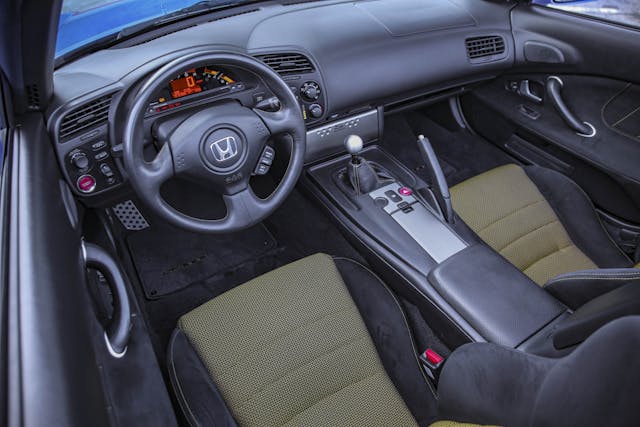
On a test drive, these cars shouldn’t have excessive wind noise, regardless of if the top is up or down. These are wind-tunnel tested cars that should give you a quiet pocket of air in the cabin as you drive. Be aware of noises from the gearbox, especially on those early AP1 cars that were the subject of the TSB. In every gear, firmly accelerate and then let off the gas and let it coast. Does it pop out of gear accelerating or decelerating? If yes, there are gearbox issues with which to contend.
All S2000s were built after the DOT-required date codes stamped on the tire sidewall. The last four digits will tell you exactly how old the tires are, but do a visual inspection for sidewall cracks, cracks between the treads, uneven wear, and sidewall cuts from impact with curbs or potholes.
Hardly anyone purchased these cars new with hardtops, and they’re as a result exceedingly rare equipment. Factory hardtops are expensive to acquire a la carte, and a color-matched top original to the car can easily add thousands to the asking price.
Honda S2000 values
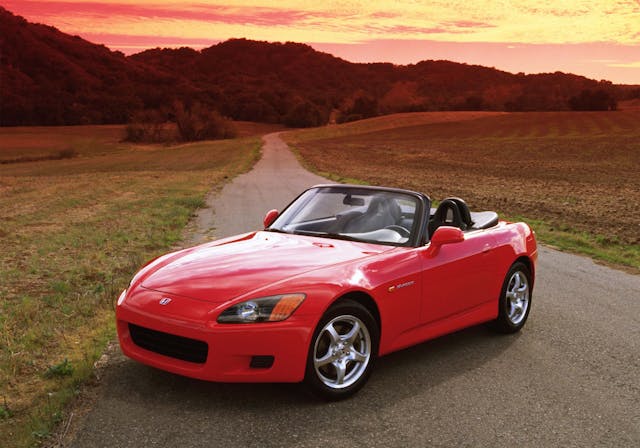
The Hagerty Valuation team has gained significant insight into the recent transaction prices for Honda S2000s, but please check here for the most up-to-date values. The latest data update doesn’t indicate any major pricing spikes. Cars that would fall into the #1 (Concours, or “best-in-the-world” examples) and #2 (Excellent) categories have been flat, but #3 (Good) and #4 (Fair) were up 2 percent over the last four months.
Looking back farther, however, S2000 values have increased significantly. We started formally tracking S2000 prices back in 2013, when examples in #2 (Excellent) condition were valued at $24,000 on average. As of February, 2021, the average value for an S2000 is $29,500, a 23 percent increase. If that seems high, it’s because most of the growth is the result of skyrocketing prices for #1 (Concours) and #2 (Excellent) condition cars.
In general, the AP1 cars are worth a bit more than the AP2s are. In 2018, Mecum sold an 855-mile 2003 S2000 for $71,500. (Mileage is key for these super-high-value cars.) It’s a similar story for a 1000-mile New Formula Red S2000 from the first model year, which sold on Bring A Trailer for $48K.

Hagerty insurance quotes for AP1 cars are up 103 percent over the last three years, and up 257 percent in the last five. Agreed values are also up, 17 percent over three years, and 15 percent in the last five years.
If you’re wondering whether younger people are into cars these days, the demographics on S2000 ownership should tell you a lot. Baby boomers own 35 percent of the S2000s insured with Hagerty, compared to 40 percent of the vintage car market overall. Millennials only make up 18 percent of the vintage car market, but our data shows that the second-largest portion of S2000 owners—31 percent—fall into that age bracket.
Only 66,860 of these cars ever made it to the United States, and the years weren’t kind to a lot of them. The youngest of these cars is a dozen years old, and the oldest is more than 20. Take your time, find a good one, and get yourself one you’ll want to drive. The aren’t many cars out there that offer this kind of driving enjoyment at the price point. Find the best-condition S2000 in your price range and you are likely to enjoy your purchase for years to come!

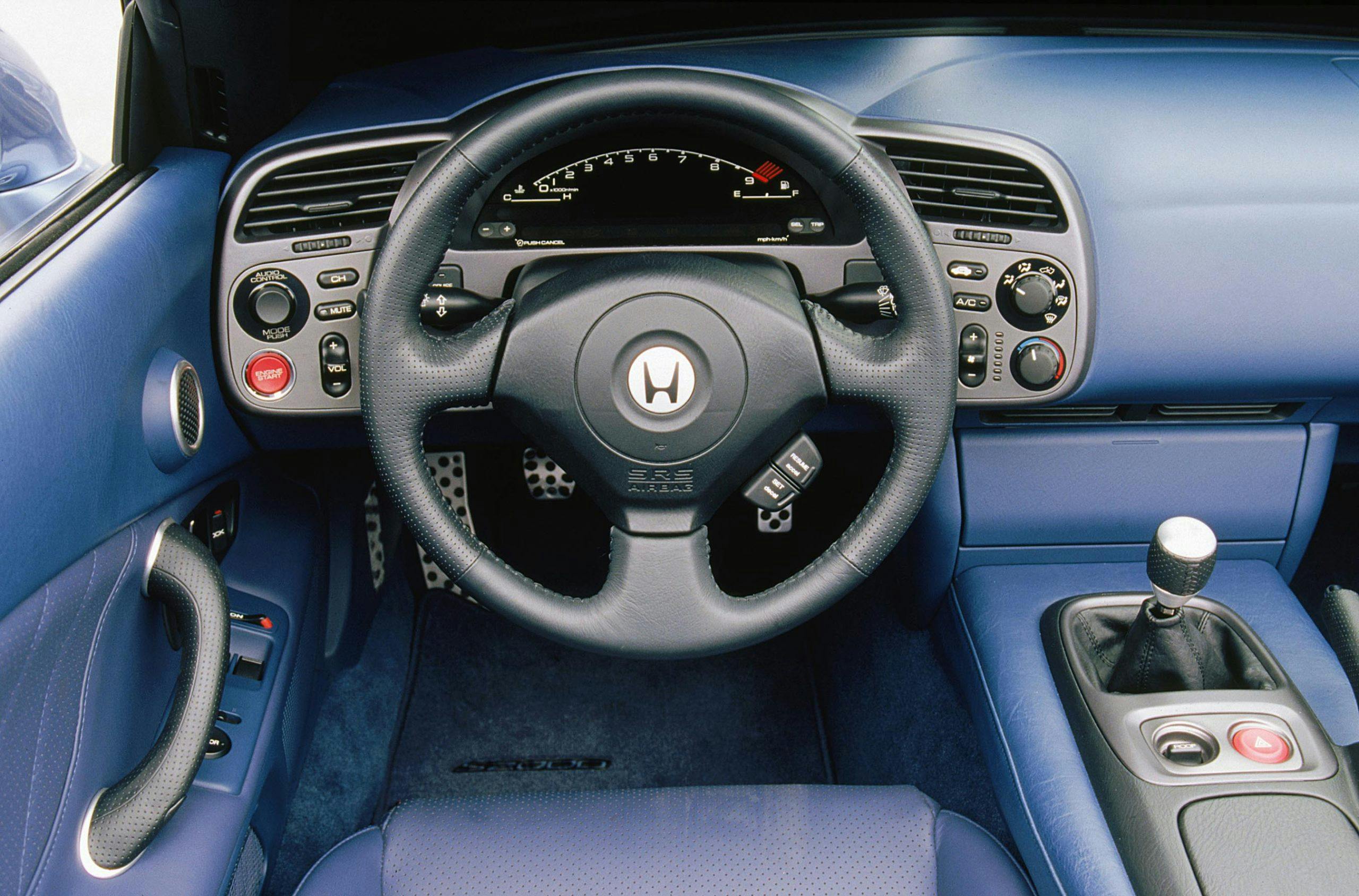
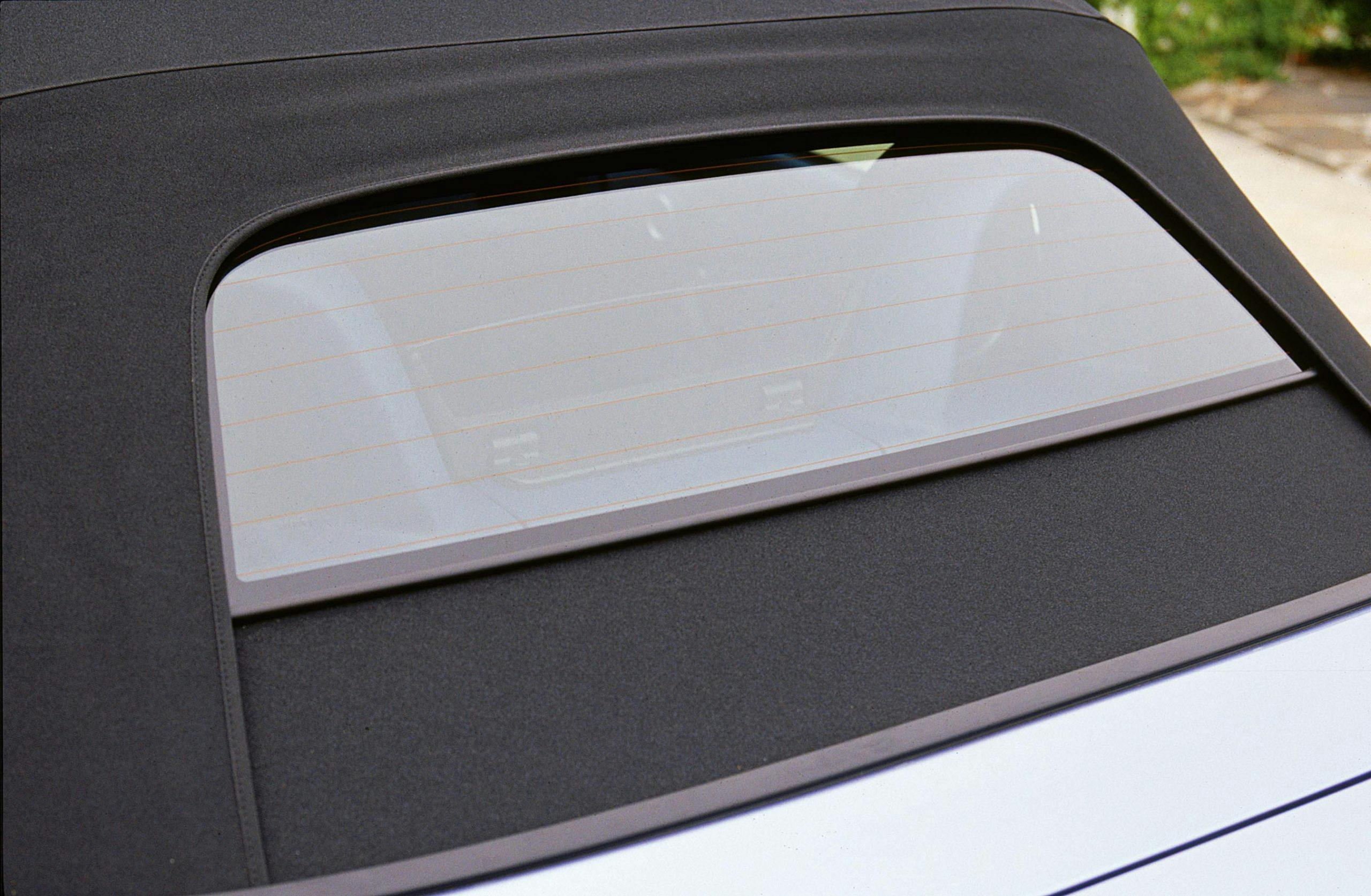
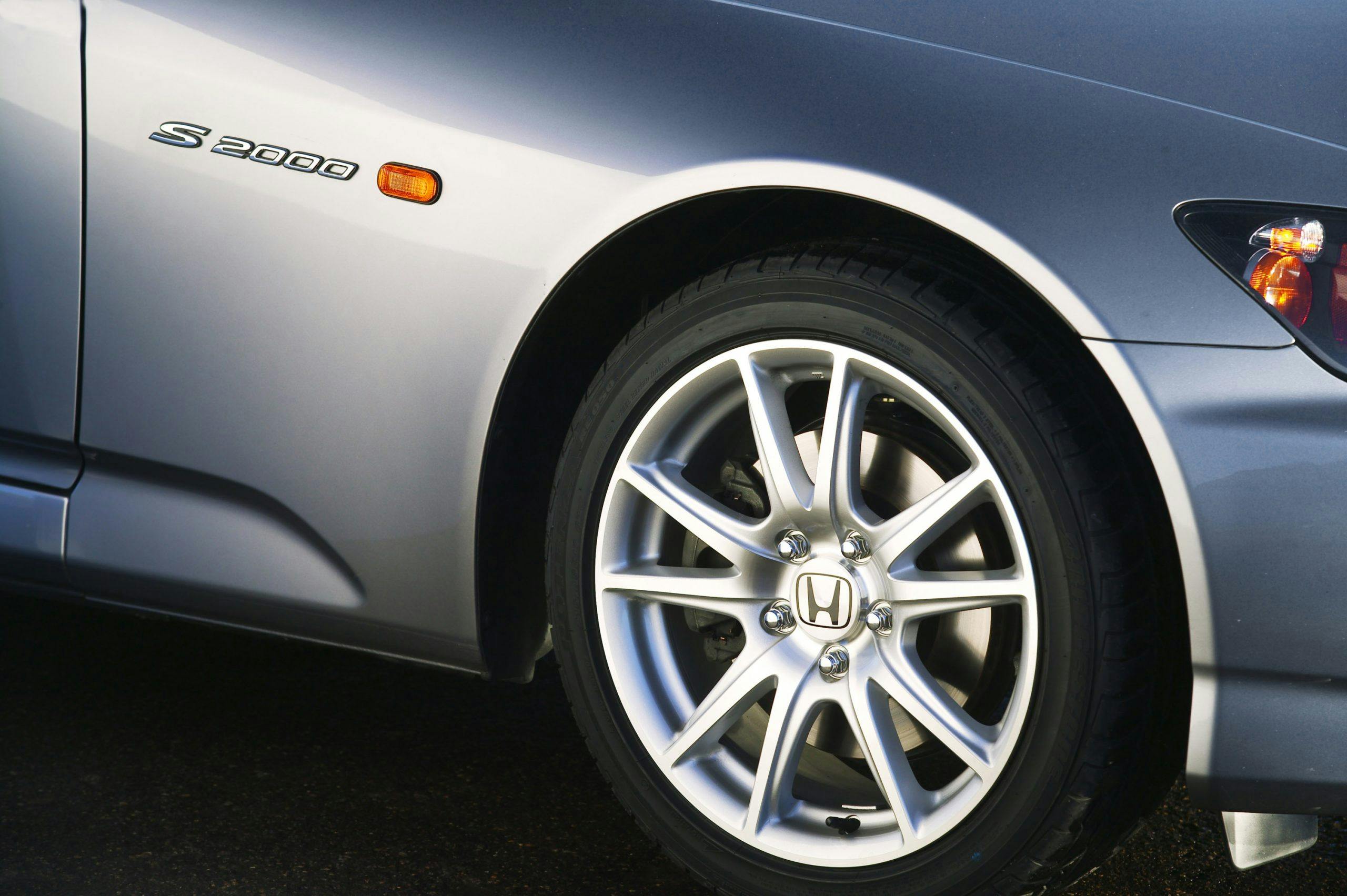
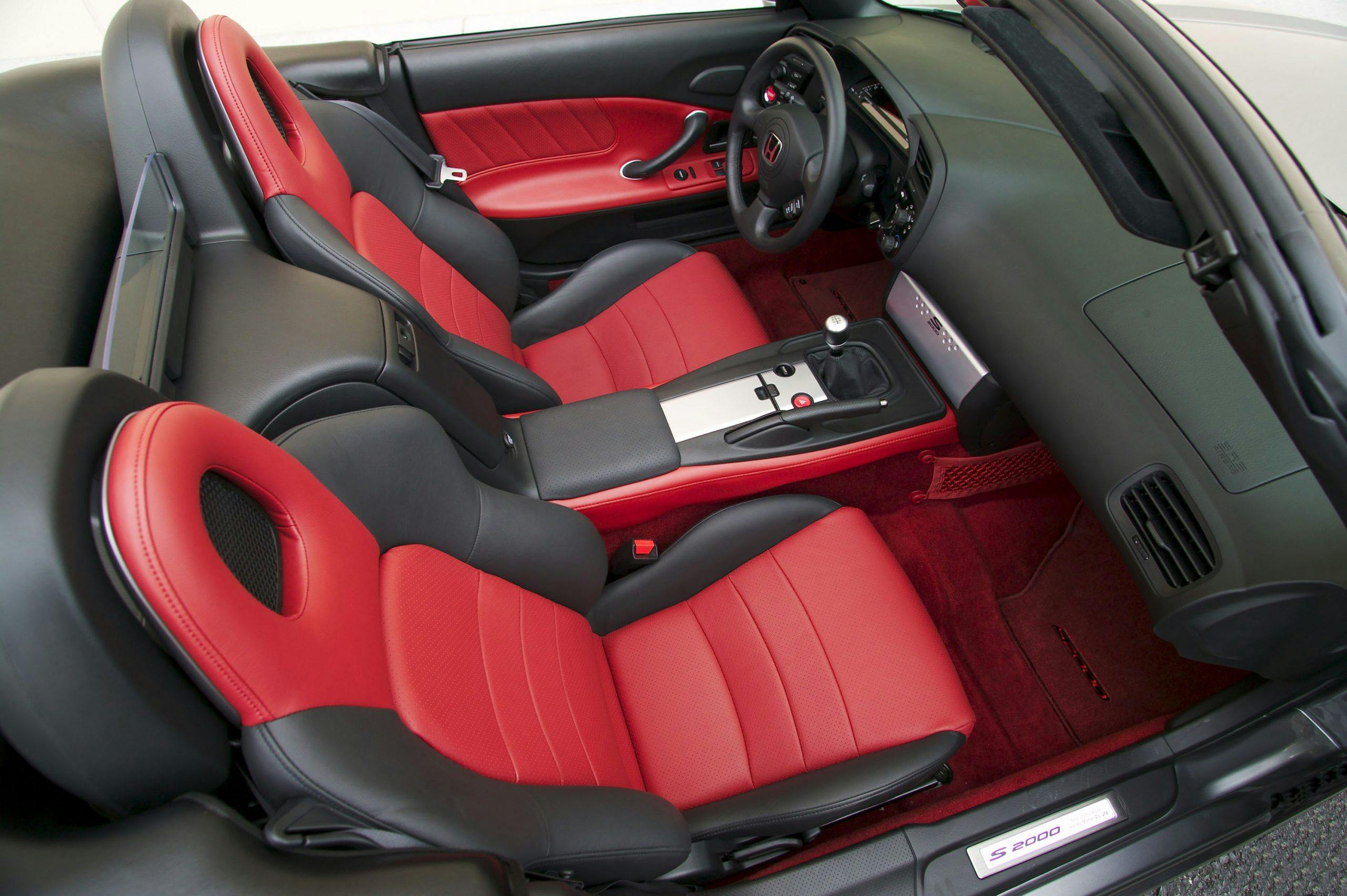
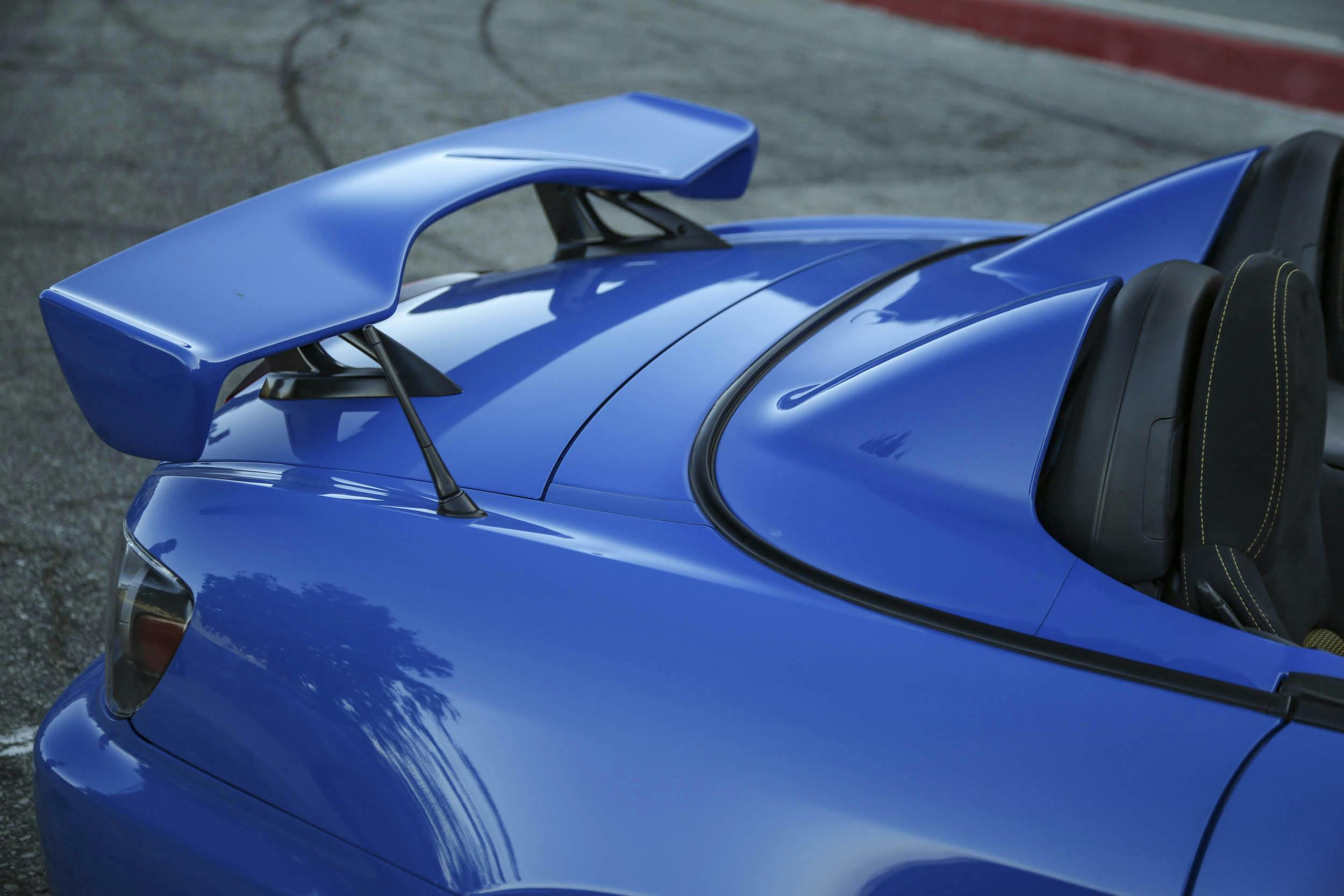
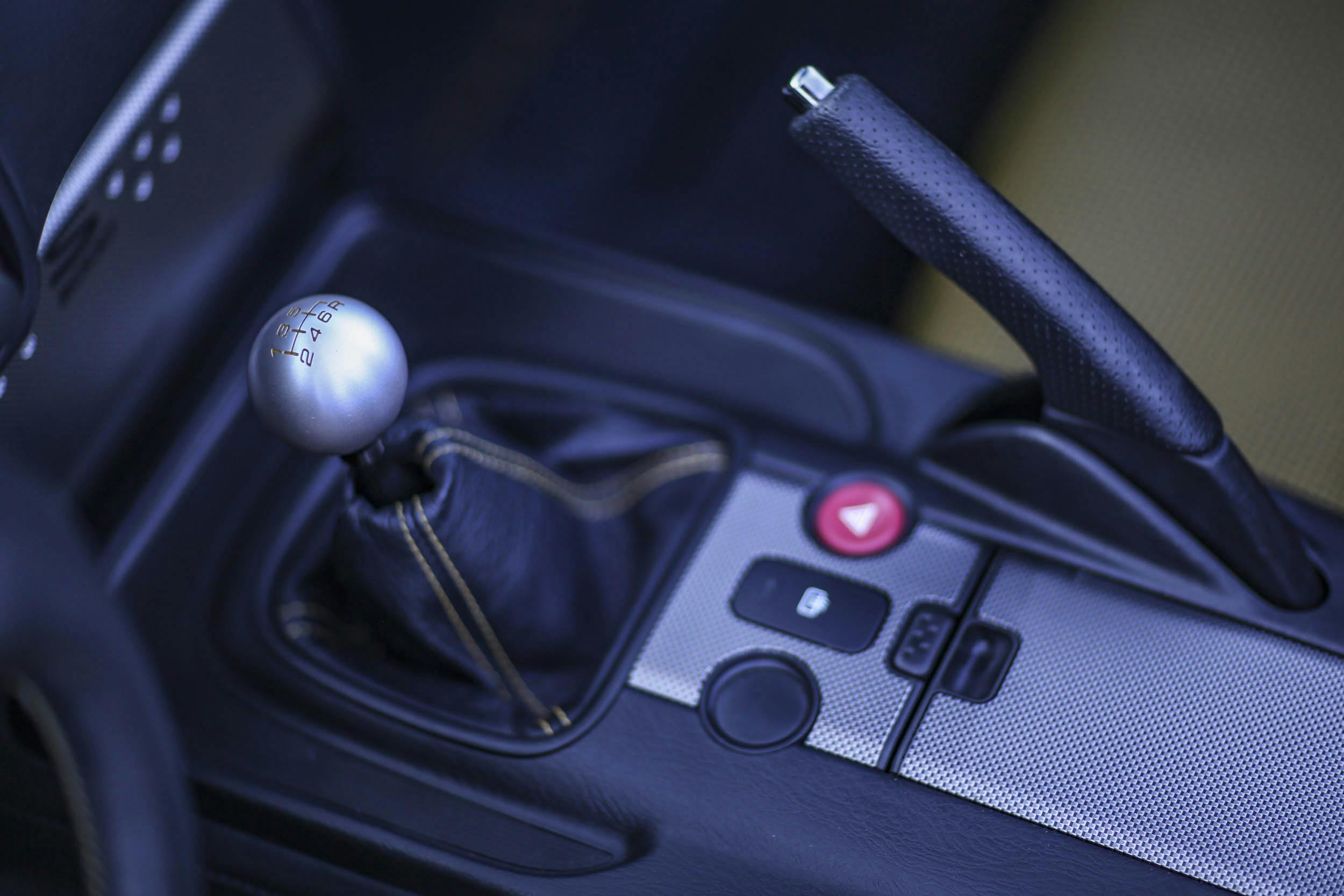


How much is a 2004 S2000 in excellent condition with 17K miles worth?
AP2 engine upgrade, not yet drive by wire. Super low miles. Probably around 35-40k depending on interior and exterior colors.
john, im in the process of buying an 07 with 16500 miles. silverstone with red/black.2 minor flaws. dime size curb rash on one of the wheels and a bit of scrape under the front lip. otherwise flawless
37500$
I have a 2003 AP1 87k miles. VERY well taken care of. I’d like to sell it. How much is it worth?
Selling my 2005 Honda S2000, only 15,300 miles, kept in garage on rubber mats and covered with custom cover. Purchased in 2009 with 3200 miles. Perfect condition.
Robert, can you contact me gutberletalan@gmail.com
I am the only owner of a 2002 spa yellow S2000 with just under 57000 miles. It has lived in a garage, been regular maintained, no wrecks, excellent condition. It’s getting hard for me to get out of, so… What should I ask for it?